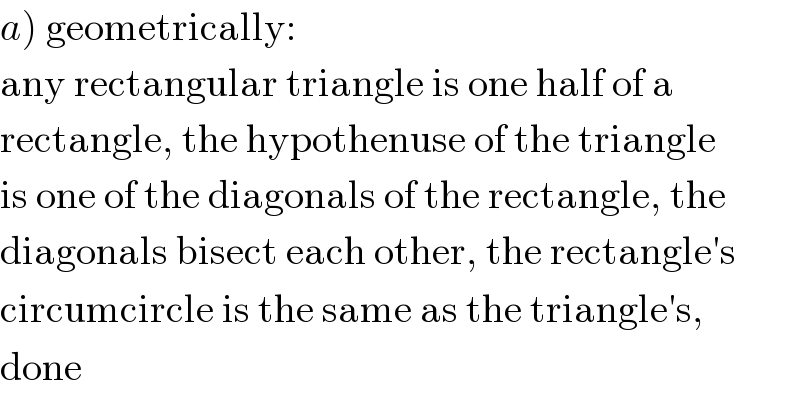
Question and Answers Forum
Question Number 67983 by peter frank last updated on 03/Sep/19

Commented by Abdo msup. last updated on 03/Sep/19
![b) let f(x)=((1/x))^(x ) ⇒f(x)=x^(−x) =e^(−xln(x)) f is?defined on ]0,+∞[ lim_(x→0 and x>0) f(x)=e^(0=1) lim_(x→+∞) f(x) =lim_(x→+∞) e^(−xlnx) =0 f^′ (x)= (−lnx−1)e^(−xlnx) =−(lnx+1)f(x) f^′ (x) =0 ⇔lnx+1=0 ⇔lnx =−1 ⇔x=e^(−1) (see thst f)x>0 ) f(e^(−1) ) =e^(−e^(−1) ln(e^(−1) )) =e^(1/e) f^′ (x)>0 ⇔ lnx +1<0 ⇔lnx<−1 ⇔x<e^(−1) varistion of f x 0 e^(−1) +∞ f^′ (x) + 0 − f(x) 1 incr e^(1/e) dcres 0 ⇒ max f(x)_(x>0) =f(e^(−1) ) = e^(1/e)](Q67984.png)
Answered by MJS last updated on 03/Sep/19

Commented by peter frank last updated on 03/Sep/19

Answered by MJS last updated on 03/Sep/19

Commented by peter frank last updated on 03/Sep/19

